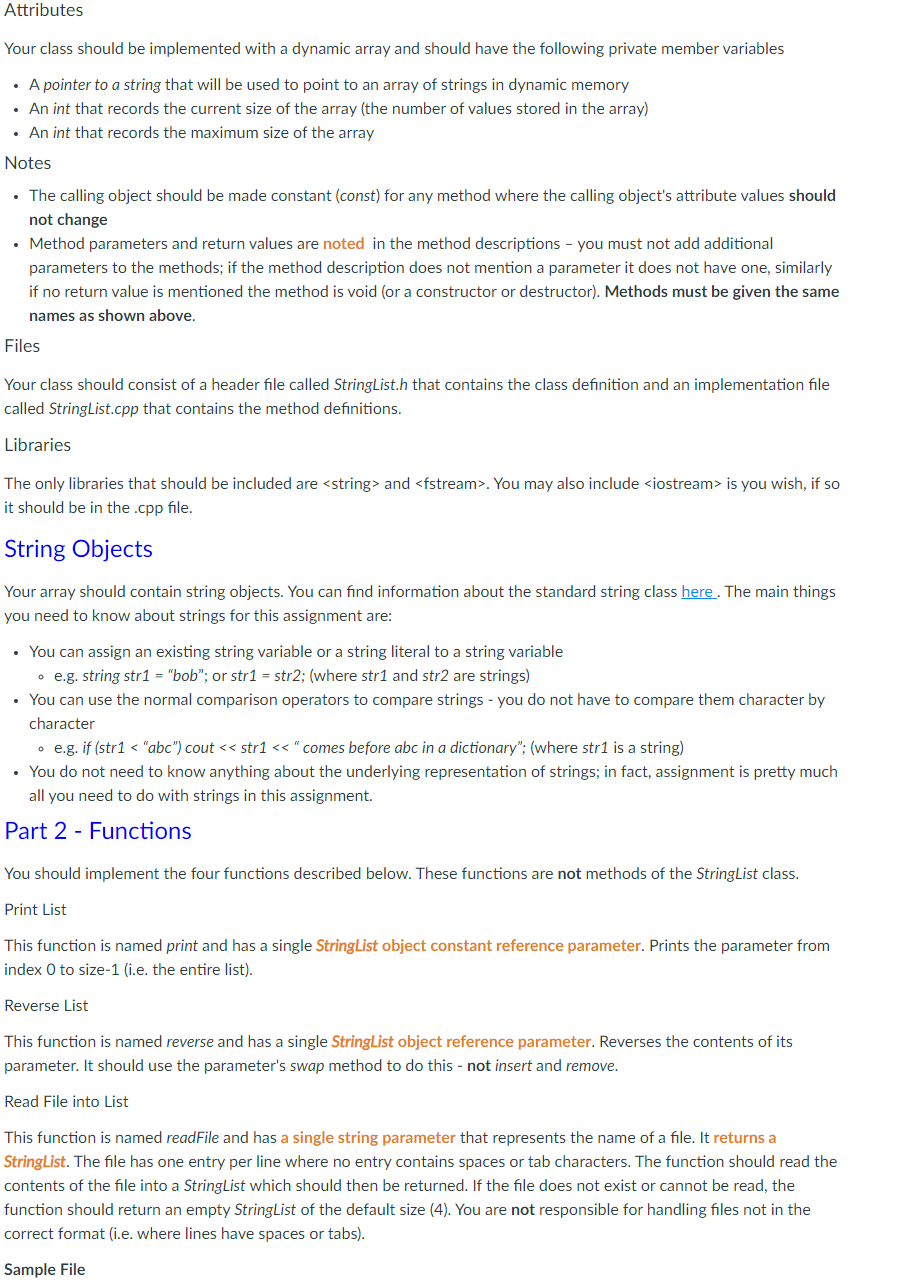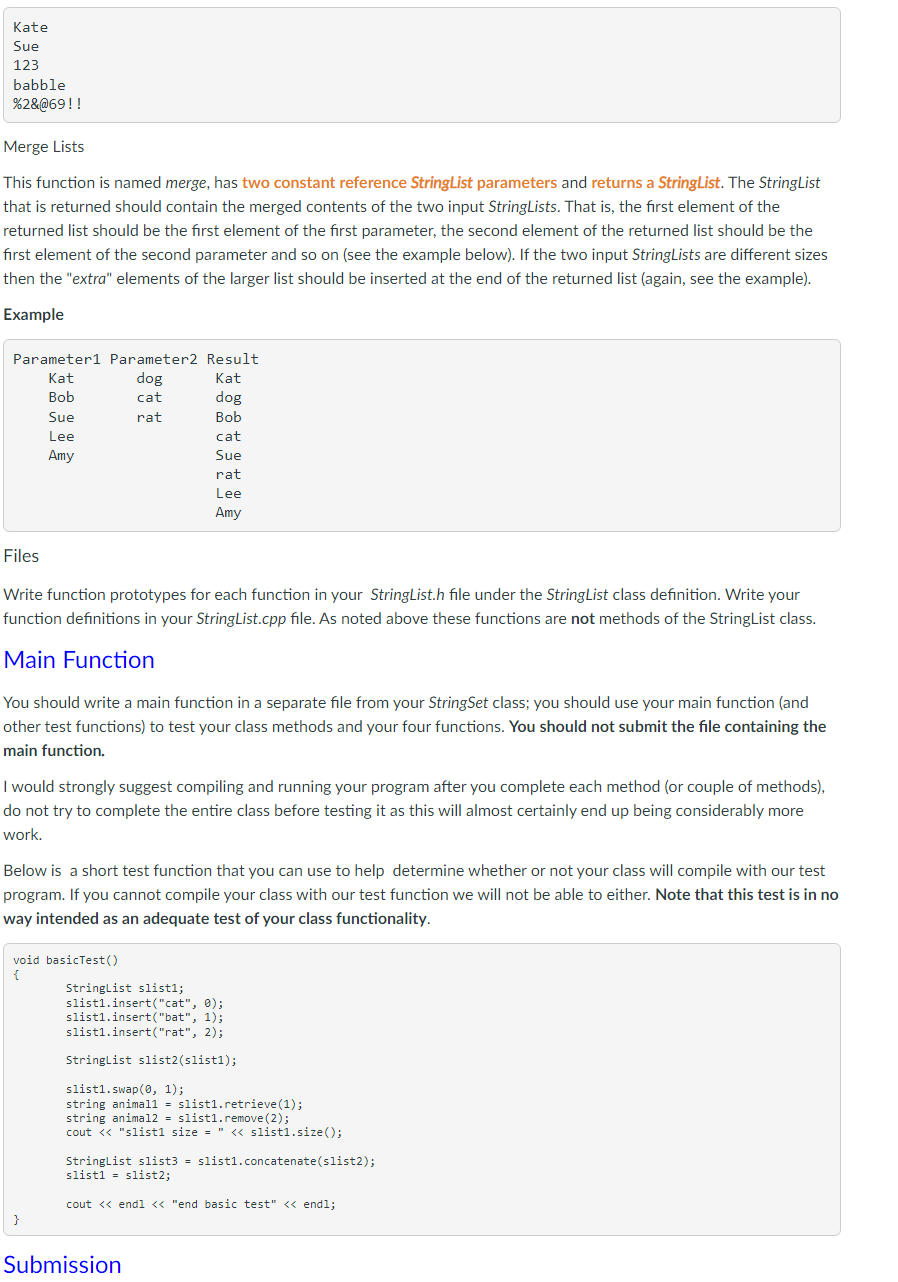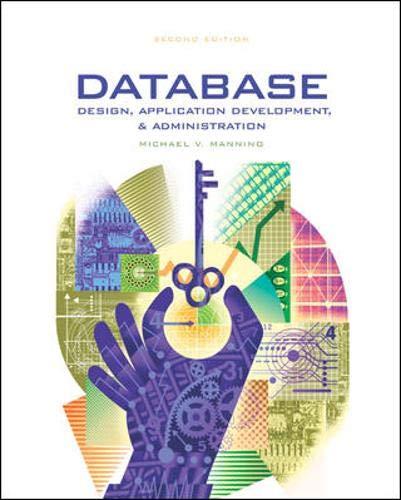Answered step by step
Verified Expert Solution
Question
1 Approved Answer
Please read all thoroughly and answer in C++ Assignment 1 - StringList Start Assignment File Types zip Due Jan 28 by 11:59pm Points 56 Submitting




Please read all thoroughly and answer in C++
Assignment 1 - StringList Start Assignment File Types zip Due Jan 28 by 11:59pm Points 56 Submitting a file upload Available Jan 19 at 12am - Jan 30 at 11:59pm 12 days You are to implement a class that stores a list of strings* and, in part 2, write functions that use objects of your class. The class should use a dynamic array as its underlying representation. Please read the requirements carefully, paying particular attention to the names and input and output requirements of the class and its methods. We will be testing your class in our test program, if you do not follow the requirements our test program will not compile and your assignment will not be marked. Please read the General Requirements before starting your assignment. *That is objects of the standard string class - so you will need to includeStep by Step Solution
There are 3 Steps involved in it
Step: 1

Get Instant Access to Expert-Tailored Solutions
See step-by-step solutions with expert insights and AI powered tools for academic success
Step: 2

Step: 3

Ace Your Homework with AI
Get the answers you need in no time with our AI-driven, step-by-step assistance
Get Started


